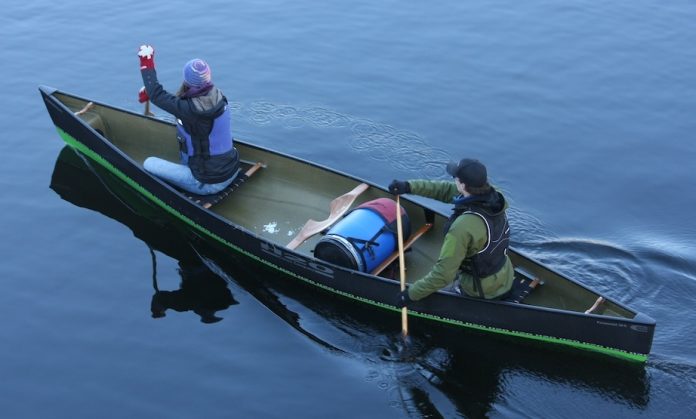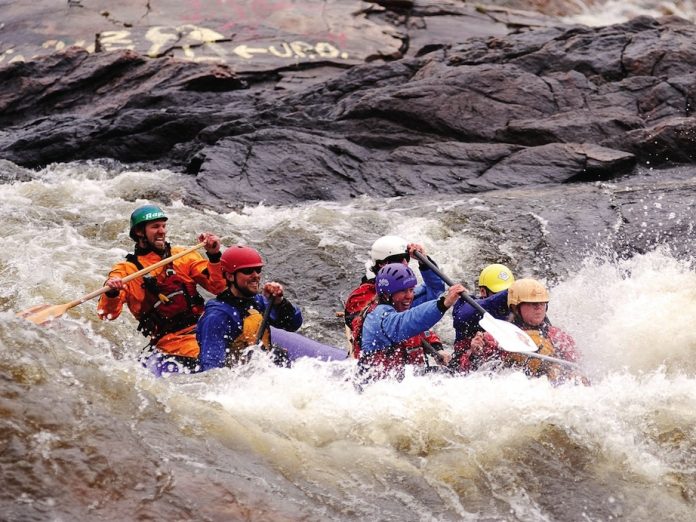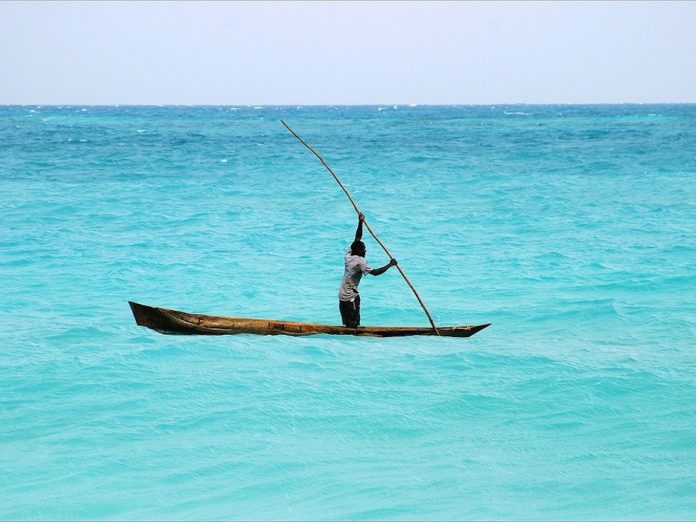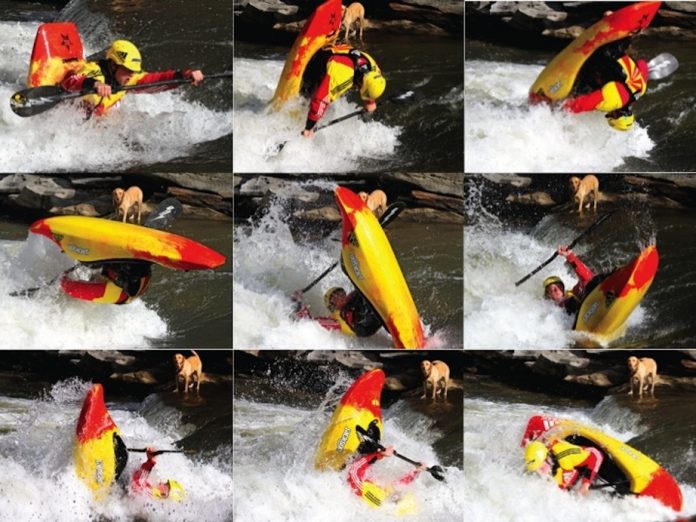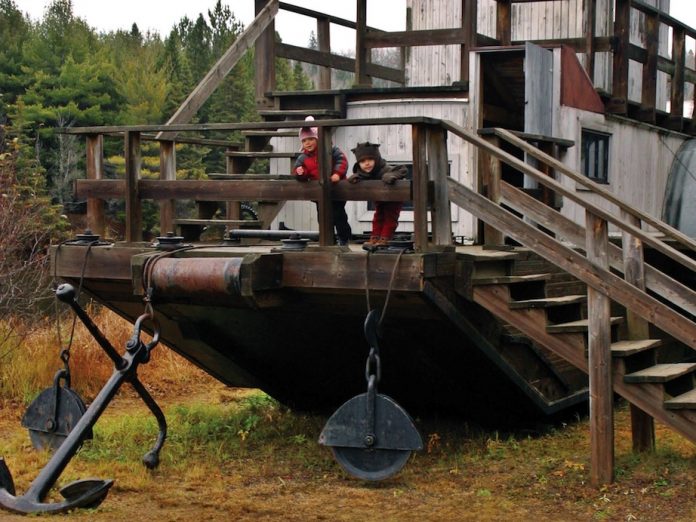This article originally appeared in Rapid magazine.
According to an Outdoor Industry Association report, roughly 20 percent of the 4.5 million Americans who went rafting in 2010 were firsttimers. That’s a lot of fresh confetti. But don’t despair; the following is a must-know inventory of rafting idiolect (no, that isn’t an insult—look it up).
Pushing rubber (v.) Raft guide’s job.
Oar whore (n.) Seasoned raft guide who is reliable and good enough to row for different companies on different rivers, a rare and dying breed.
GORB (n.) Good Old Rafting Buddy.
Get down (v.) Move to a more secure position on the raft floor, typically above a drop where there is a high probability of falling out. If you blow it, you’ll be thankful for the…
Chicken line (n.) Perimeter line on a raft, grab it after falling out. Grab it if you’re chicken.
High side (n. & v.) 1. The tube that is pushed upward when a raft comes up against a rockor hole sideways. 2. The act of crew jumping from the low side of the boat to the high side—when executed in time, this can prevent a flip or wrap.
Taco (v.) When a raft folds around an obstacle. AKA: burrito, wrap.
Dump truck (v.) When everyone except the guide is ejected from the raft. AKA: bus stop.
Clean plate (n.) When everyone including the guide is spilled out but the raft does not flip.
Yard sale (n.) Colorful assortment of swimmers and gear following a flip. AKA: confetti, garage sale.
Sweep boat (n.) 1. The last boat in a group of rafts, the sweep brings up the rear and makes sure no one gets left behind. 2. Large, commercial cargo boat used on the Middle Fork and Main Salmon rivers.
Groover (n.) Metal box that holds solid human waste on a river trip, most often used in the arid Southwest.
Groover duty (n.) Chore typically assigned to the lowest ranking or least popular member of a river party, involves setting up the groover at camp and cleaning it post-trip.
Snakebite (n.) Small hole in a raft that can be heard but not seen, detected by the hissing of escaping air.
SPORT (n.) Stupid People On Rafting Trips. See also: GORB.
Bow puppy (n.) Person riding in the bow of an oar rig, does not assist with paddling or steering.
Speed bump (n.) Kayaker who doesn’t get out of the way of a raft.
Baptism (n.) Raft guide’s first swim.
Thanks to all those who participated in
our Facebook poll.
This article originally appeared in Rapid, Spring 2012. Download our free iPad/iPhone/iPod Touch App or Android App or read it here.





